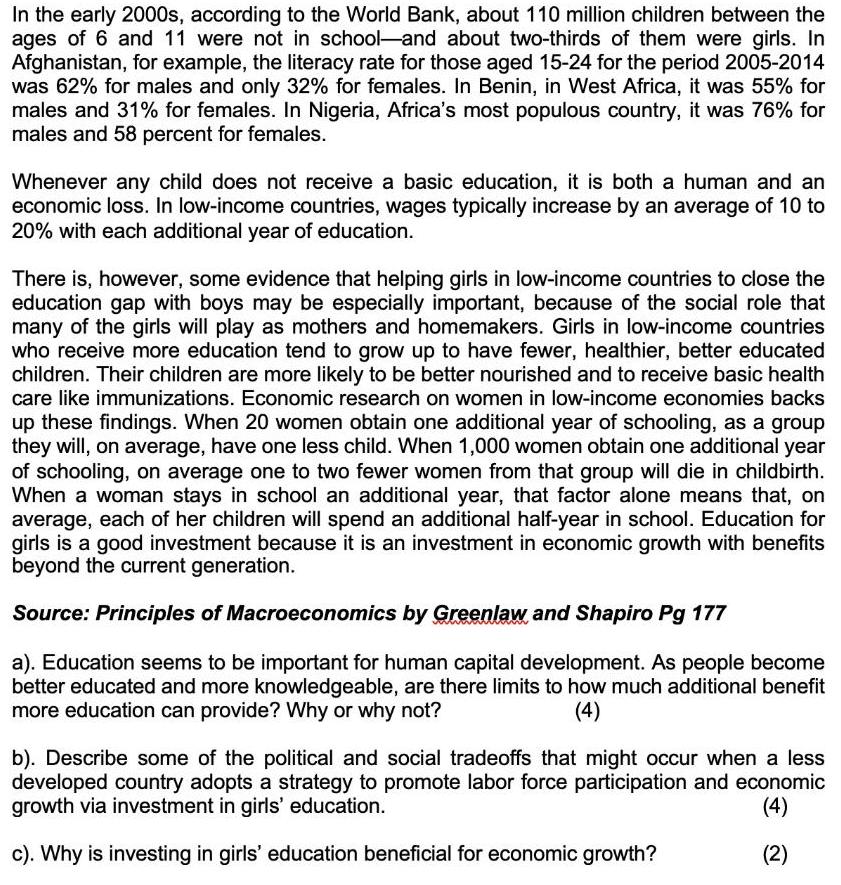Answered step by step
Verified Expert Solution
Question
1 Approved Answer
In the early 2000s, according to the World Bank, about 110 million children between the ages of 6 and 11 were not in school

In the early 2000s, according to the World Bank, about 110 million children between the ages of 6 and 11 were not in school and about two-thirds of them were girls. In Afghanistan, for example, the literacy rate for those aged 15-24 for the period 2005-2014 was 62% for males and only 32% for females. In Benin, in West Africa, it was 55% for males and 31% for females. In Nigeria, Africa's most populous country, it was 76% for males and 58 percent for females. Whenever any child does not receive a basic education, it is both a human and an economic loss. In low-income countries, wages typically increase by an average of 10 to 20% with each additional year of education. There is, however, some evidence that helping girls in low-income countries to close the education gap with boys may be especially important, because of the social role that many of the girls will play as mothers and homemakers. Girls in low-income countries who receive more education tend to grow up to have fewer, healthier, better educated children. Their children are more likely to be better nourished and to receive basic health care like immunizations. Economic research on women in low-income economies backs up these findings. When 20 women obtain one additional year of schooling, as a group they will, on average, have one less child. When 1,000 women obtain one additional year of schooling, on average one to two fewer women from that group will die in childbirth. When a woman stays in school an additional year, that factor alone means that, on average, each of her children will spend an additional half-year in school. Education for girls is a good investment because it is an investment in economic growth with benefits beyond the current generation. Source: Principles of Macroeconomics by Greenlaw and Shapiro Pg 177 a). Education seems to be important for human capital development. As people become better educated and more knowledgeable, are there limits to how much additional benefit more education can provide? Why or why not? (4) b). Describe some of the political and social tradeoffs that might occur when a less developed country adopts a strategy to promote labor force participation and economic growth via investment in girls' education. (4) c). Why is investing in girls' education beneficial for economic growth? (2)
Step by Step Solution
★★★★★
3.44 Rating (163 Votes )
There are 3 Steps involved in it
Step: 1
a There may be diminishing returns to education at some point but it is difficult to say exa...
Get Instant Access to Expert-Tailored Solutions
See step-by-step solutions with expert insights and AI powered tools for academic success
Step: 2

Step: 3

Ace Your Homework with AI
Get the answers you need in no time with our AI-driven, step-by-step assistance
Get Started


